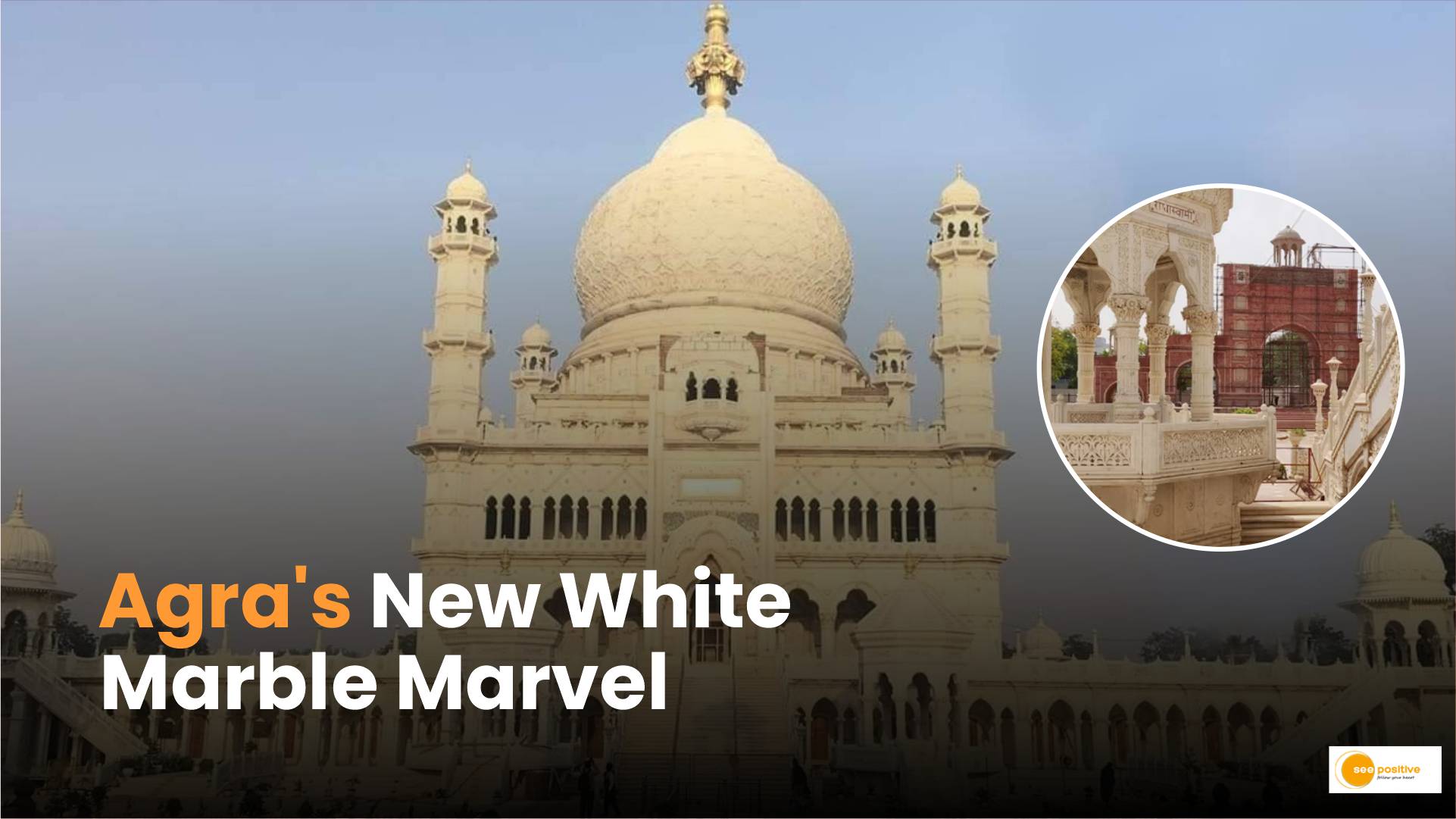Agra, the city of Mughal-era monuments, has a new architectural wonder that is captivating tourists and locals alike. The Soami Bagh Samadh, a pristine white marble structure, has recently opened its doors to spiritually inclined visitors. Let’s delve into the fascinating story behind this century-in-the-making marvel and explore how it compares to the iconic Taj Mahal.
The Construction Saga
Unlike the Taj Mahal, which was completed within 22 years by skilled artisans and craftsmen under a medieval authoritarian regime during the 17th century, the construction of the Soami Bagh mausoleum extended over 104 years. This remarkable feat reflects unwavering faith, fervor, and dedication on the part of its creators, who were motivated by their religious beliefs.
Architectural Splendor
- Design and Materials: The towering 193-foot structure stands entirely crafted from white marble sourced from Makrana in Rajasthan. Its pristine appearance and intricate detailing make it a worthy rival to the Taj Mahal. The mausoleum rests on a foundation of 52 wells, symbolizing both engineering ingenuity and spiritual significance.
- Founder’s Legacy: The Soami Bagh Samadh is dedicated to the founder of the Radha Soami faith, Param Purush Pooran Dhani Swamiji Maharaj. Its grandeur and spiritual significance draw visitors seeking solace and inspiration.
- Visiting the Mausoleum: Tourists flock to this architectural gem daily. While the entrance is free, photography is not permitted. Visitors can witness craftsmen still engaged in their work, adding finishing touches to this century-old masterpiece.
Comparisons with the Taj Mahal
- Time and Patience: The Taj Mahal’s swift construction stands in contrast to the Soami Bagh Samadh’s gradual evolution. The latter’s century-long journey reflects a different era and a more open society.
- Spiritual Significance: Both monuments represent forms of worship. While the Taj Mahal immortalizes Mughal Emperor Shah Jahan’s love for his wife Mumtaz Mahal, the Soami Bagh Samadh embodies the devotion of Radha Soami followers.
- Architectural Impact: The Soami Bagh Samadh adds to Agra’s architectural splendor, complementing the Taj Mahal. Its pristine white marble façade and intricate carvings evoke awe and admiration.
Tourist places to visit in Agra
Agra, with its rich historical heritage, offers a plethora of tourist attractions beyond the iconic Taj Mahal. Here are some must-visit places in Agra:
- Agra Fort (Red Fort):
A UNESCO World Heritage Site, the Agra Fort is a magnificent red sandstone fortress that served as the main residence of the Mughal emperors. Explore its impressive architecture, beautiful gardens, and panoramic views of the Yamuna River.
- Fatehpur Sikri:
Located just outside Agra, Fatehpur Sikri is another UNESCO-listed site. This abandoned city was once the capital of the Mughal Empire during Emperor Akbar’s reign. The intricate palaces, courtyards, and the Buland Darwaza (Gate of Victory) are awe-inspiring.
- Itmad-ud-Daulah’s Tomb (Baby Taj):
Often referred to as the “Baby Taj”, this tomb is a precursor to the Taj Mahal. Built in white marble, it showcases delicate inlay work and serene gardens. It’s a hidden gem that deserves a visit.
- Mehtab Bagh:
For a unique view of the Taj Mahal, head to Mehtab Bagh, a garden complex across the Yamuna River. Sunset views of the Taj from here are breathtaking.
- Jama Masjid:
Agra’s largest mosque, the Jama Masjid, is an architectural marvel. Its imposing red sandstone structure and intricate carvings make it a must-see.
- Chini Ka Rauza:
This lesser-known monument houses the tomb of Afzal Khan, a Persian poet and scholar. The blue-glazed tiles (chini) on its façade are unique and give it an elegant look.
- Akbar’s Tomb:
Located in Sikandra, a short drive from Agra, Akbar’s Tomb is the final resting place of Emperor Akbar. The blend of Mughal and Persian architectural styles is captivating.
- Mariam’s Tomb:
Another hidden gem, Mariam’s Tomb, is dedicated to Mariam Zamani, Emperor Akbar’s wife. The octagonal structure and intricate lattice work are worth exploring.
Remember to explore beyond the Taj Mahal and immerse yourself in the rich history and culture of Agra!
Conclusion
As tourists explore Agra, they now have another marvel to admire—the Soami Bagh Samadh. Its century-long construction journey, spiritual significance, and architectural beauty make it a worthy competitor to the Taj Mahal. Whether you’re a history enthusiast, an architecture lover, or a seeker of spiritual experiences, this white marble wonder awaits your visit in the heart of Agra.
Remember, while the Taj Mahal remains an eternal symbol of love, the Soami Bagh Samadh stands as a testament to faith, patience, and human endeavor across generations. Plan your visit and witness this extraordinary marvel that enriches Agra’s cultural heritage!


